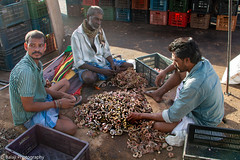
- Read More About:
- Australia Tendering Process
Dry Skin Needs Tender Loving Care
by
Only a lucky few have ‘normal’ skin; the rest of us have a dry, oily or combination variety; if dryness is your problem, read on.
The good news is that today, there are several types of natural treatments to choose from for your dry skin.
Symptoms most associated with Xeroderma (dry skin) are scaling, which is the visible peeling of the outer skin layer, itching and cracks in the skin.
The skin is often known as “the largest organ of the human body”. Skin also receives less blood flow and lower gland activity. The average square inch of skin holds 650 sweat glands, 20 blood vessels, 60,000 melanocytes, and more than a thousand nerve endings.
The dermis is tightly connected to the epidermis by a basement membrane. The epidermis can be further subdivided into the following strata (beginning with the outermost layer): corneum, lucidum(only in feet), granulosum, spinosum, and basale.
The blood vessels in the dermis provide nourishment and waste removal to its own cells as well as the epidermis.
Certain drugs, including diuretics, antispasmodics, and antihistamines, can contribute to dry skin. Dry skin happens more often in the winter when cold air outside and heated air inside cause low humidity. Skin gets exposed to the elements especially in winter. Dry skin could be due to a genetic condition.
Thick, oily-type moisturizers work best. Use bath oils and moisturizers daily. For any skin condition, it’s always better to take a natural approach.
Concentrating on a diet of LOTS of fruits and vegetables (preferably uncooked) and no junk food, should give you an observable improvement within 30 days.
Drink plenty of water, a minimum of a quart a day. For an easy fiber boost, mix in 2 tablespoons of ground up flaxseeds in raw applesauce, from 2-3 apples, made in your food processor.
The two most common, sluggish, digestion issues that affect your skin are not enough water and not enough fiber. Good skin is often a reflection of a good digestive system.
Coconut oil: it just takes a little motivation, a willingness to try it, and diligent application of coconut oil several times daily and at bedtime to see its benefits.
The best treatment I’ve found for dry skin is coconut oil. Coconut oil is very inexpensive, therefore, a good, cheap home remedy. Apply a thin layer of coconut oil and massage it deep into the skin.
Functions of the skin are disturbed when it is dirty; it becomes more easily damaged, and the release of antibacterial compounds decreases and dirty skin is more prone to develop infections.
The skin supports its own ecosystems of microorganisms, including yeasts and bacteria, which cannot be removed by any amount of cleaning. Sunlight, water and air play an important role in keeping the skin healthy.
Usually, these days, we can take care of dry skin without seeing our doctor, but sometimes we can’t avoid it.
If your dry skin lasts for a long time and is itchy or feels hot when you touch it, see your doctor. With this information your dry skin should be well on its way to recovery.
For more information on
coconut oil treatment for dry skin
and dry skin care treatments go to http://www.Best-Skin-Care-Tips.com Helen Hecker R.N.’s website specializing in care for skin conditions with tips, advice and resources for women, men, teens and babies, including information on the
best natural products
Article Source:
eArticlesOnline.com}